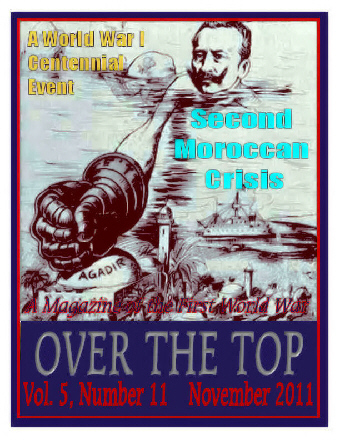

TRENCH REPORT: This is a busy season. November is the time of our annual remembrance events for the Great War and is also the anniversary of the St. Mihiel Trip-Wire. You will see much in this issue in the spirit of these celebrations. However, another pressing activity is getting the newly unified World War One Historical Association (WW1HA) off to a flying start. This involves preparing the first issue of our new Journal, combining the former organization's websites into a new and upgraded platform and, MOST IMPORTANT, signing up the membership of the new organization. Below in the left column, you will see the section where we delineate how you will be able to access registration information for the WW1HA and for all our scheduled events. Please take time to join us.
MH
New at Our Own & Our Friends' Great War Websites
Click on Title or Icon to Access
|
News About the Organizational Website(s)
All the former websites of the WFA-USA and TGWS are being consolidated at the new site of the World War One Historical Association where you can download a mail-in membership registration form:
ww1ha.org.
We are currently implementing our PayPal registration feature for those who wish to pay online and it will be available shortly. An announcement will be sent to everyone on our email list when it is operational. The larger consolidation process will take several months, but all critical information will always be accessible at their new addresses (URLs). For those pages being moved to the new site we will also provide email contacts for those who may have questions. Below is a list of our scheduled activities with contacts:
|
Southwest Chapter
Armistice Day Remembrance (pdf download)
5 November 2011
USS Texas, San Jacinto Battleground
Contact: Michael Kihntopf
email: KIHNT@swbell.net
Bay Area Tri-Chapter Meeting & Luncheon
12 Nov 2011, Francesco's Rest. Oakland
Contact: Sal Compagno
email: sal00@mindspring.com
tel: 510-526-4423
Florida-Gulf Chapter Seminar (website)
War on the Eastern Front
Tampa: 16-17 March 2012
Contact: Len Shurtleff
email: lshurtleff@aol.com
tel: 352-379-3200
WW1 National Seminar
USMC University Quantico
7-8 Sept. 2012
Contact: Len Shurtleff
email: lshurtleff@aol.com
tel: 352-379-3200
|
This Month's Internet Feature
Indian Troops in the Great War
Over 1.5 million troops from India served on the Western Front, Africa and the Middle East. Their story has been neglected.
Participants from the Indian Subcontinent
Photo Album: Indian Troops in the First World War
The Mesopotamian Campaign
The 2nd Indian Cavalry Division on the Western Front
India's Air Ace: Indra Lal Roy, DFC, 40 Squadron RAF
The Beautiful Indian Memorial at Neuve-Chapelle

One Hundred Years Ago:
1 November 1911: Lt. Giulio Gavotti of Italy, flying an Etrich Taube aircraft,
dropped bombs from an airplane in war for the first time, attacking
Turkish positions in Libya.
|
Reader and Luxembourg resident David Heal has written to inform us that Old Fritz may have overstated champion bicyclist François Faber's role as "best-known Luxembourgeois" of the war in the last issue. Faber seems to have spent minimal time in his home country, hence his enlistment in the army of his preferred residence, France. |
|
Armistice-Veterans-Remembrance Day
2011
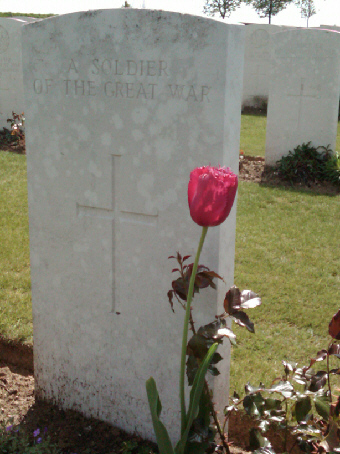
|
GREAT WAR 2011 EVENTS CALENDAR
|
|
We are redesigning our Events Calendar. See left column for World War One Association Activities. Please keep sending us announcements, they will be included when we unveil the new calendar.
|
Send additions/corrections for our 2012 schedule:
Email Response
|
Who is this individual and what role did he play in the First World War?
This is onetime U.S. Congressman from San Francisco, Julius Kahn, who was a leader of the preparedness movement. He and his wife, who succeeded him on his death in 1924, helped build the 20th-century American military. Kahn helped draft and secure the passage of the National Defense Act of 1915 and the Selective Draft Act of 1917, and while serving as chairman of the Committee on Military Affairs (1919-1924), the National Defense Act of 1920. Florence Kahn paid particular attention to the building of U.S. naval aviation in the interwar period.
A New Memorial Dedicated to the American Dead of the Great War

Rainbow Division Memorial
by James Butler, RA
On 12 November 2011, nearly 100 years after the beginning of the Great War, a new American memorial will be inaugurated on the site of the Croix Rouge Farm, to the south of the city of Fère-en-Tardenois, in Picardy, a region profoundly scarred by the fighting of First World War. It will commemorate the 42nd "Rainbow" Division, a National Guard Division, which had men from almost all the states. In provenance it "covered America like a rainbow." The division, with Douglas MacArthur first as chief of staff and later as commander of one of its brigades, saw more days of combat than any other American division during the Great War and suffered 14,683 casualties.
This monumental bronze statue of an American soldier carrying his dead comrade is the work of British artist James Butler, RA. It will be erected on the site of a battle that took place on 26 July 1918, in the vicinity of Fère-en-Tardenois, during the Aisne-Marne offensive. There, one regiment of the 42nd "Rainbow" Division, the 167th (Alabama) Infantry Regiment, overran German positions in and around the fortified Croix Rouge farm, pushing them to the other side of the Ourcq river, and contributing immeasurably to the liberation of the Marne salient.

At first there will be increased slaughter -- increased slaughter on so terrible
a scale as to render it impossible to get troops to push the battle to a decisive
issue. Everybody will be entrenched in the next war. The spade will be as
indispensable for a soldier as his rifle. All war will of necessity partake the
character of siege operations. Then we shall have a long period of continually
increasing strain upon the resources of the combatants. Soldiers may fight as they
please; the ultimate decision is in the hands of famine.
Ivan Bloch, Modern Weapons and Modern War, 1897
|
|
|
|
Page Two
|
|
|
A World War One Educational Innovation!
|
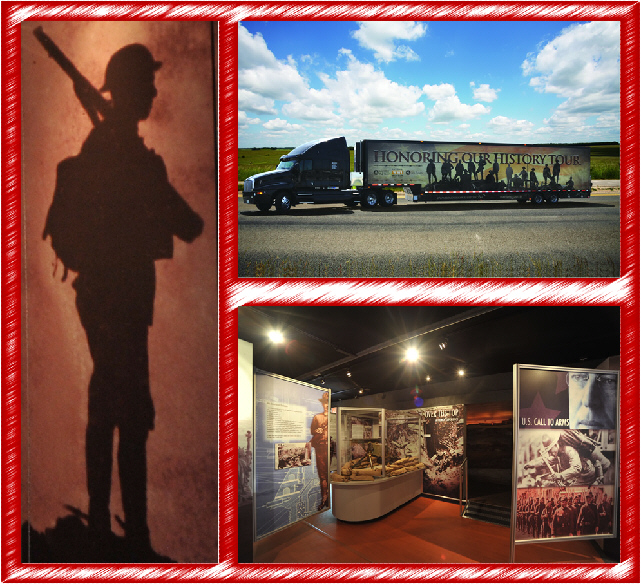
Our friends at the National World War I Museum have done something remarkable -- a traveling version of their institution. It is cruising around the nation to great acclaim, and plans are to visit 75 communities around America. Pictured above is the display on the road and an interior shot of one of the internal display bays. Corporate sponsors Waddell & Reed and the Ivy Funds (founded by WWI veterans) allowed the museum staff to create a remarkable distillation of their main collection in Kansas City. The displays cover trench warfare, total war, America's entry, going "Over There," the roles of women and minorities, and the Armistice. Visit their website to see the schedule. http://honoringourhistory.com/
|
|
World War I Headlines
in the 21st Century
|
|
|
|
Nurse Helen Wood: A Scottish Lass, War, and the American Dream
Contributed by Sonny Moran
The pioneering medical unit of Chicago's Northwestern University Base Hospital #12 quickly and secretly slipped out of New York Harbor. Their departure was without fanfare as defense against alerting German submarines lurking in the Atlantic Ocean. The nurses, doctors, and orderlies possessed a mixture of excitement and apprehension onboard the troopship SS Mongolia. The medical unit was sailing to Europe where it was desperately needed by the many seriously wounded and permanently maimed Allied soldiers. World War I had been raging for four years in France, and trench warfare had stalemated into a conflict of attrition.
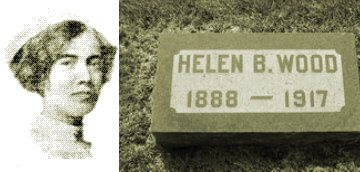
Nurse Helen Wood and Her Grave Marker, Rosehill Cemetery, Chicago
The well-trained nurses looked impressive and dignified in their dark blue cloth and scarlet-lined capes. The letters "U.S." proudly emblazoned on their collar, demonstrating their pride in representing America and the United States Army. One of the nurses was Helen Wood. Born in Portobello, Scotland, in 1888 she was a true Scot. Her face shone with a ruddy glow of cheek and her red golden hair complimented the merry jest that fell so easily from her smile. She had resisted societal pressure to marry and raise a family in Scotland, choosing instead to follow her two sisters to America to pursue the American Dream in 1909. Helen also had three brothers, one of whom was 19-year-old Private William Adamson Wood who had served with the 7th Battalion, Royal Scottish Regiment. The young man had proffered a false age to Army recruiting staff to join the fight in the Great War. He was killed after receiving orders to attack out of Trench H10 at Gully Ravine, during the Gallipoli Campaign, on 28 June 1915. Helen was observing her twenty-eighth birthday on 16 May 1917, when she received a telephone call informing her she had been accepted as a member of the United States Army medical unit. She was excited. After eight years away from Scotland she would be able to see her parents and brother James serving with the British Expeditionary Force (BEF) in France.
Helen's parents lived in Musselburgh, 24 High Street to be exact. Her mother had recently sent Helen a letter protesting against her taking a trip to war torn Europe. She wanted her daughter to put off her voyage back to the old country until hostilities at sea had subsided. Helen was the oldest member of six children and was the only woman in the family in a position to earn a decent living. Another one of her brothers serving in the British Army was wounded at the Dardanelles and was unable to do more than very light duties. Her third brother was too young to work. Helen's parents operated a butcher shop in Musselburgh and her father John had begun a family late in life. The 1901 census of Scotland lists the patriarch of the family at 52 years old. During World War One he was an elderly man and unable to support himself after suffering a heart attack. Helen's mother, Frances, had been bedridden for months with a variety of ailments.
Her family's burdens had prodded Helen to find opportunity to help support her family in Scotland and keep the wolf from their door. She believed coming to America -- known as the land of opportunity -- would allow her to obtain a profession to allow her to ease her family's financial challenges.
But she was loathe to live the life of a domestic servant. Her two sisters who had already arrived in America were working as domestics in Chicago. They worked long hours for low pay. Working as a domestic was one of the few jobs readily open to women in the early part of the 20th century. Helen did take time to enjoy life, and was courted by gentlemen both in Scotland and America, but she was a career-minded woman before it became accepted in society. It didn't take her long to start contributing to her new country. She graduated from the Training School for Nurses in Evanston, Illinois, and was soon promoted to be the night superintendent of the contagious disease section at the Evanston Hospital near Chicago.
Helen possessed conflicting emotions at leaving the contagious disease unit to join the United States Army, but she knew nurses were needed in France. She certainly didn't have much time to mull the decision over, as the news of her acceptance into the Army's medical unit gave Helen just five hours to pack, say her goodbyes, take her dutiful oath of office and prepare to board a train leaving the Windy City of Chicago for the Big Apple of New York City.
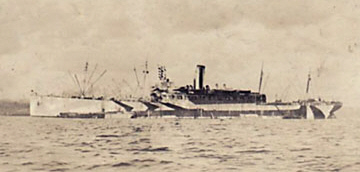
Helen's Ship, SS Mongolia (Later USS Mongolia)
May 20th, 1917, was a beautiful spring day. The sun reflected off the ship's spider web of strong steel cables supporting four large cargo masts and several smaller ones. The Mongolia's naval gunners decided to take advantage of the calm sea to conduct target practice. Nearly all the 60 nurses of Base Hospital #12 were on deck, watching and waiting for the target practice to begin. Many nurses were leaning over the top rail, 175 feet aft, and 10 feet above the naval gun to be fired. There was a great interest in the guns that were protecting the Mongolia from submarines. As the third shot boomed from the gun across the water, reportedly the brass cup of the gun powder container shattered into flying pieces, strafing the deck of the ship with razor-sharp metal. Helen Wood suddenly slid out of her chair and collapsed on the deck. Her colleagues thought she might have fainted. But when they looked closer they discovered she had been struck in the chest by flying shrapnel. The nurses on deck sprang into action to help revive their wounded comrade, but their valiant efforts were in vain. Helen was dead.
With her shocking passing Helen Wood became the first official American female military member to be killed while on duty, along with another nurse at the same time in the same incident, in the history of the United States. When Helen's sisters, Annie and Janet living in Chicago, received word of their sister's tragic passing they were sickened with grief. "I didn't want Helen to go, but she said if her brothers could risk their lives for Britain, she could risk hers for America," Annie Wood told the Chicago Tribune shortly after Helen's death.
In place of floral offerings, friends of Helen Wood were asked to contribute money at her funeral toward a purse to be sent to her aged parents in Scotland. Her parents had received many letters of condolence offering sentiments such as, "At the outbreak of the present American greatest war, (Helen Wood) deemed it her duty to minister to the sick and wounded on the battlefields of Europe." The tragedy even shook the very halls of the American Senate. "It will, Mr. President (of the United States) ever be a cause of unspeakable regret that the first American victims of this war were women, accidentally killed by the firing of guns on an American ship by American gunners," New Jersey Senator Joseph Frelinghuysen declared in the Senate.
Today, just a humble head marker provided by her family, marks Helen Wood's grave in Chicago's Rosehill Cemetery. The president of the National Capital Tartan Day Committee in the United States, Mr. Gil Smith, and the Adjutant Canada American Legion representative, Mr. Charles D. Weber, are graciously attempting to persuade the United States government to honor Ms. Wood's ultimate sacrifice with an official United States Military Marker at her resting place. The request for a military grave marker is now being reviewed by the Under Secretary for Veteran Affairs of Memorial Affairs, Steve L. Muro.

Helen Honored (Name top left) at Her Village Church in Scotland
Helen Wood was the sister of Sonny Moran's grandmother, Janet Wood. Janet was one of Helen's sisters who preceded her to America. Mr. Moran is writing a book about Helen Wood. He is also author of Captains of Concrete and Floating Tombstone -- The Mysterious Disappearance of North America's First Concrete Ship both available at Amazon.com Kindle and Smashwords.com.
|
|
|

Wine Ration:
Never doubt how important his wine ration was to the French Poilu
|

|
|
|
|
|
Subscribe to Our Online Magazine
|
|

|
|
|
Page Three
|
|
|
Access to In-Depth Articles
From the Commonwealth War Graves Commission,
|

Click on the image to download the portal to the full feature.
This is an excellent treatment of the Battle of the Somme (albeit from the British point of view exclusively) and it features an outstanding campaign map.
|
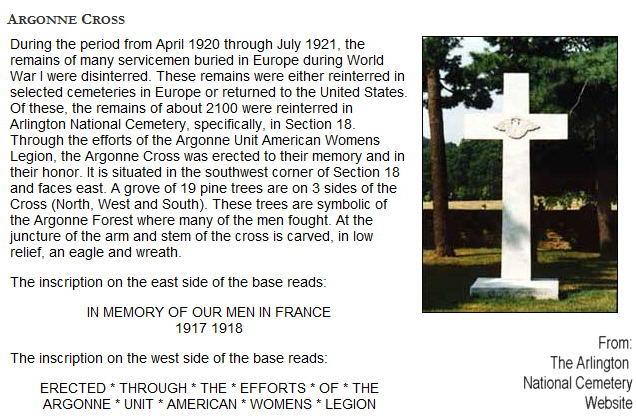
This Month
Selections from Our Readers:
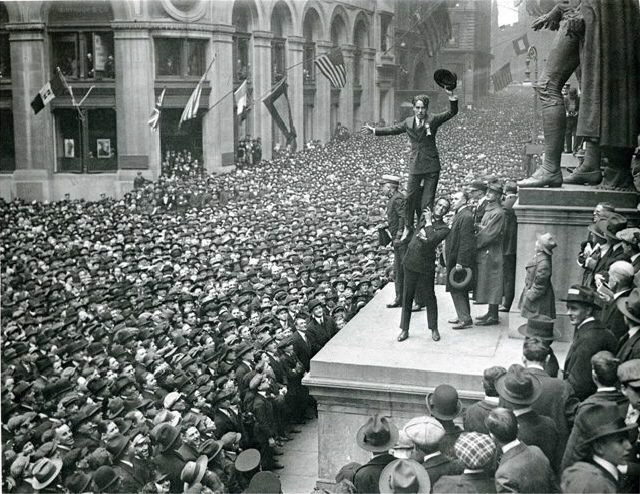
|
Occupying Wall Street: Where George Washington took the first presidential oath of office, Douglas Fairbanks hoists Charlie Chaplin at this 1918 Liberty Loan rally.
|
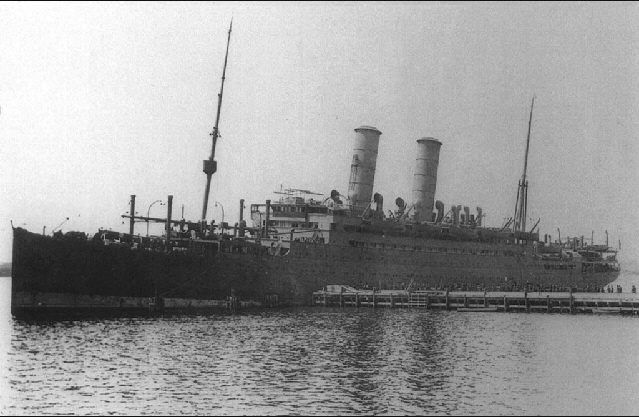
|
SS Tuscania: Despite what is cited in a number of histories, some American troops were lost to German U-boats in the Great War. On 5 February 1918, UB-77 sank the Cunard liner Tuscania that was transporting members of the U.S. 20th Engineers and a number of aero squadrons to Europe. Most of the 210 killed (of about 2,500 passengers) were Yanks.
|
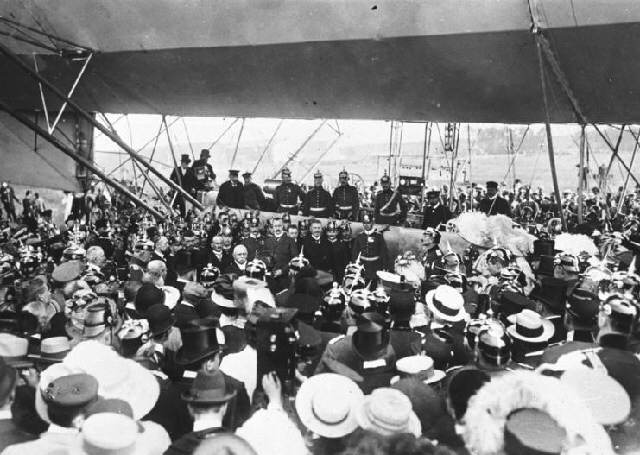
|
Tempelhof Field: In 1909 the location of Berlin's future principal field was the site where Ferdinand Graf von Zeppelin tested his airships. This photo shows von Zeppelin receiving an honor from Kaiser Wilhelm II (back to camera).
|

| Temporary burial plot for men of the 81st Division AEF killed on 11 November 1918.
|
|
|

|
 |
Off the Beaten Track
Three Books on the Editor's Personal Reading List
|
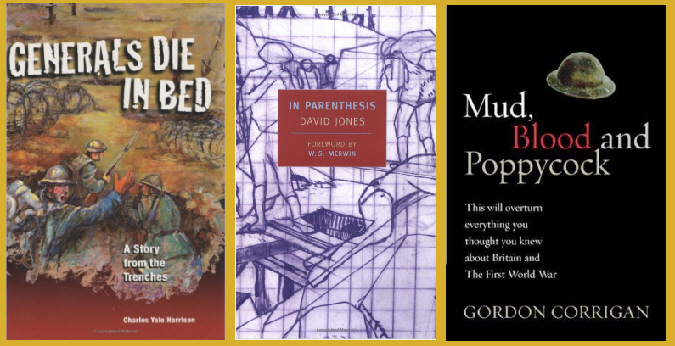
Your editor gets a lot of recommendations on World War I books and occasionally stumbles across interesting-sounding works in his own research. These three unconventional works have worked their way to the top of my personal reading list. If any of the readers would like to read these in parallel with me, please contact me. Rather than publish a straight review in a future Trip-Wire or the new Journal of the World War One Historical Association, I'd like to present something like a multi-party dialog / commentary. We could accomplish this via email exchanges or on our organizational forum. Send me an email if you are interested in participating. Here are the three works:
Generals Die in Bed by Charles Yale Harrison is a hard-boiled novel that tells the story of a frontline soldier. It was written by an American who served in Canadian forces. The late Matthew Bruccoli mentioned this to me once, but could not include it in his own series of World War I classics for some reason.
In Parenthesis by David Jones, the Great War's version of epic poetry, has been on my list of "must reads" for some time. My visits in 2009 and 2010 to Troy led me to rereading The Iliad, so now I'm feeling ready for another challenging piece of verse. (It's a notoriously tough read.)
Mud, Blood and Poppycock by Gordon Corrigan was recommended to me by my associate in the battlefield tour business, David Craig. David has promised that this work provides a witty demolition of the "Every-General-a-Donkey" mythology of Oh, What a Lovely War and a good segment of Great War literature.
Send me an email if you would like to read along and share your comments on one of these works with our readers: greatwar@earthlink.net.
|
|
|













